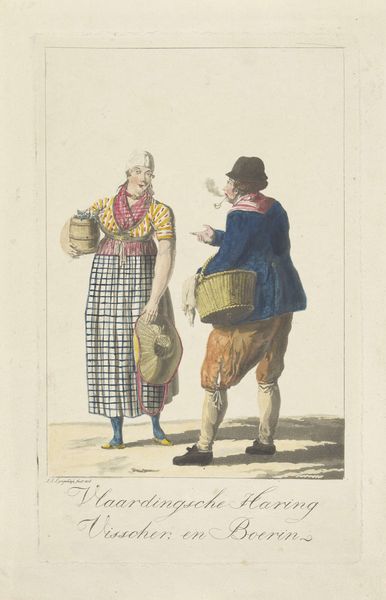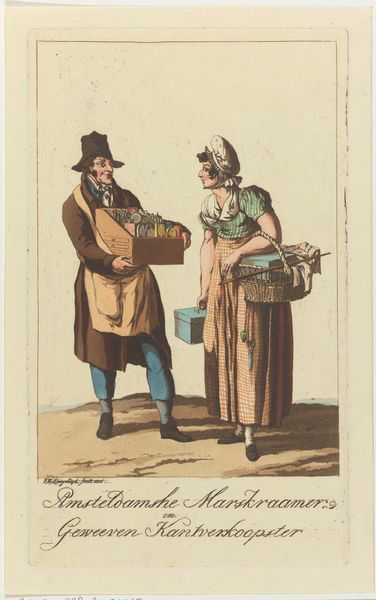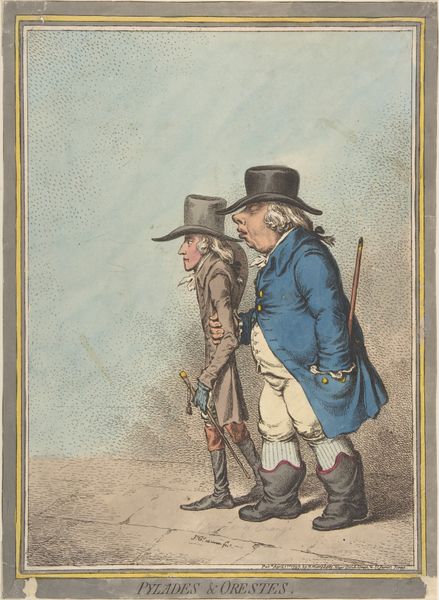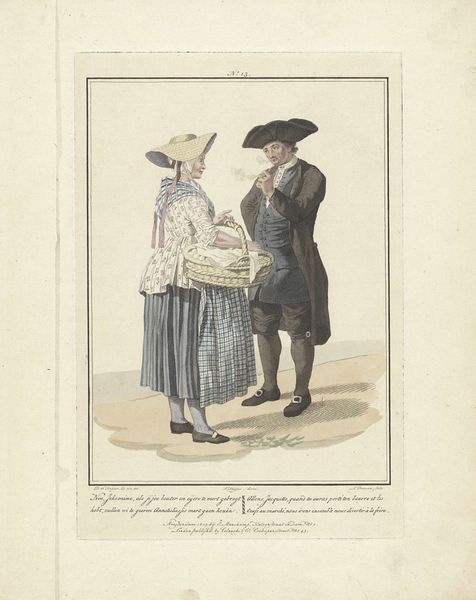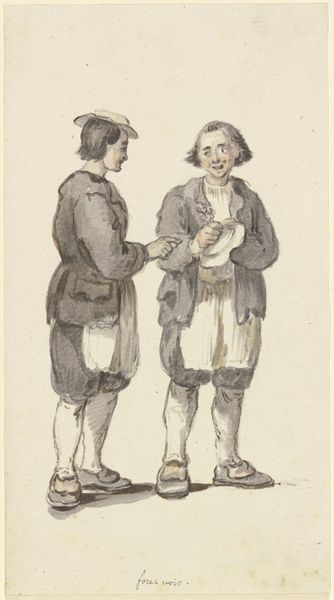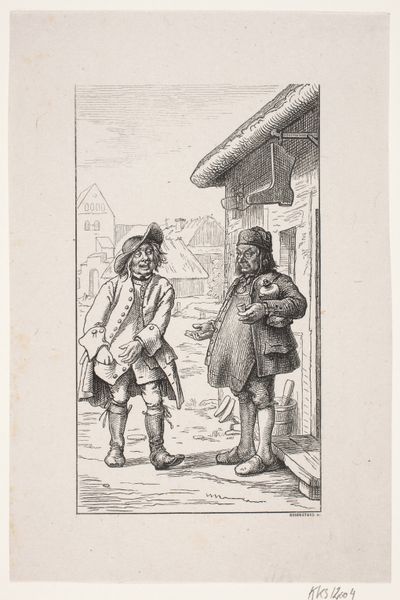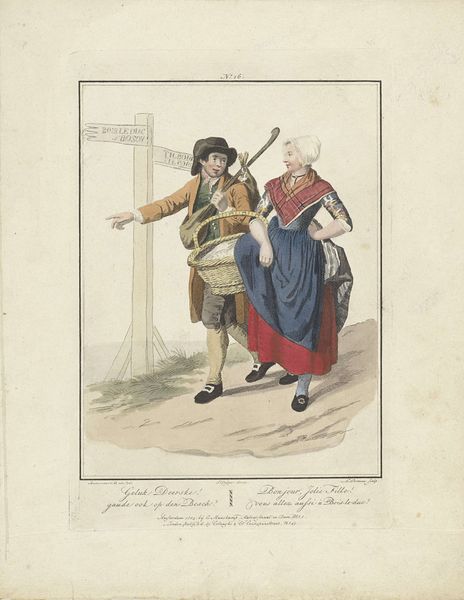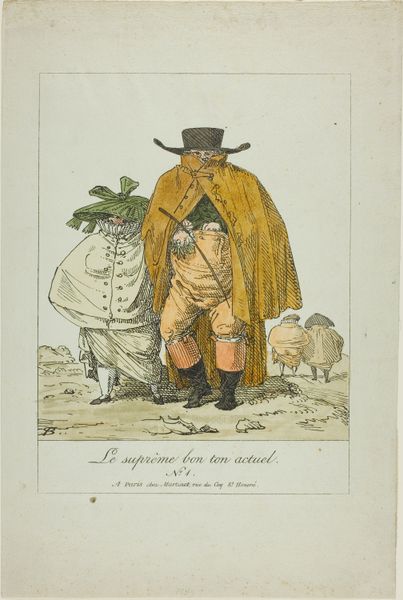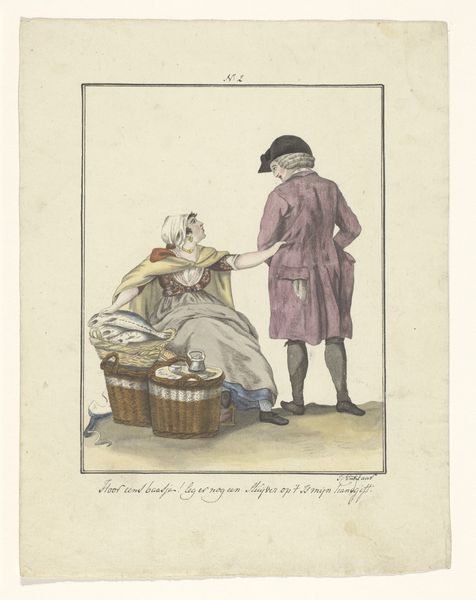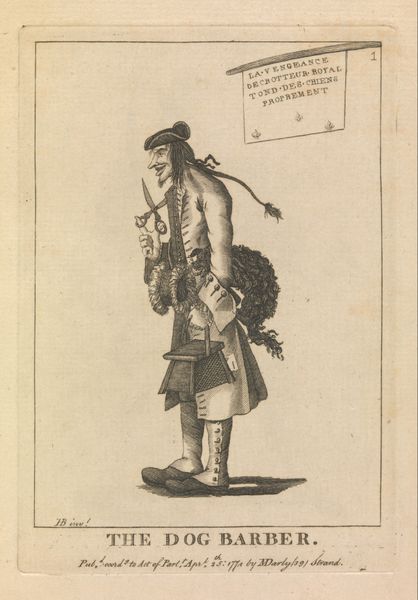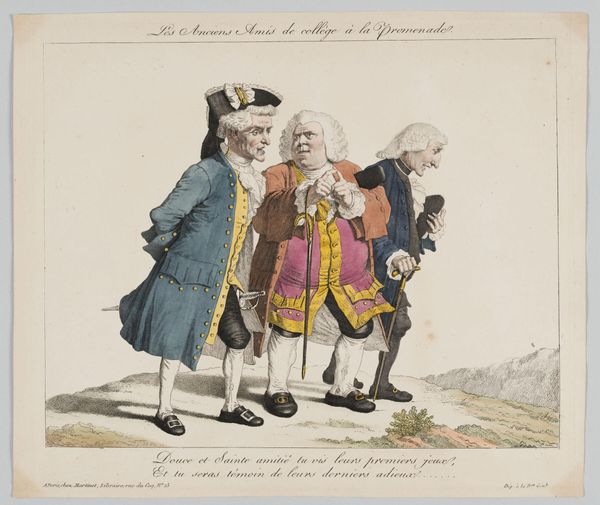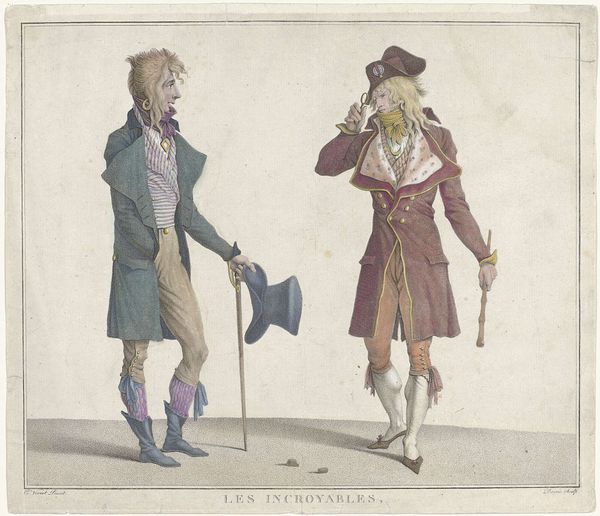
drawing, print, watercolor, pencil
#
portrait
#
drawing
# print
#
caricature
#
caricature
#
figuration
#
watercolor
#
historical fashion
#
romanticism
#
pencil
#
watercolour illustration
#
genre-painting
#
history-painting
Dimensions: height 227 mm, width 136 mm
Copyright: Rijks Museum: Open Domain
Curator: Let's talk about "Rotterdamse kooplieden" created around 1816, and now housed at the Rijksmuseum. The artist, Jan Anthonie Langendijk Dzn, rendered these figures through drawing, pencil, and watercolor, finalized as a print. Editor: My first impression is how strikingly odd they both look! There’s a palpable awkwardness in their stances and exaggerated features – a kind of caricatured realism that pulls you in. What’s your read on it? Curator: That 'awkwardness', as you put it, feels incredibly deliberate. Looking at it from an intersectional point of view, you can't help but wonder about the artist’s intentions. The stark contrast in their attire and expressions seems loaded, perhaps commenting on societal expectations of gender or class during that period. Editor: Absolutely. And speaking materially, look at the woman’s woven shawl versus the man’s stout leather boots and what appears to be an account book. We can read these clothes, these everyday objects, as embodiments of specific labors, certain trades in Rotterdam in the early 19th century. Even her overflowing basket suggests the harvest or direct sale of food, in opposition to his more formalized record keeping. Curator: Right, there’s almost a stage-like quality to their presentation, drawing attention to these implicit roles, and making visible the social dynamics between them and broader systems in that time. It's almost a deconstruction, isn't it? Showing us the artifice of their places within this burgeoning merchant society. Editor: Exactly, Langendijk draws on the tradition of genre painting and caricature, not only representing merchants but dissecting the social structures shaping their livelihoods, from production to consumption. The emphasis is not so much on ‘who’ they are but ‘how’ their existence is facilitated and determined by their material conditions and roles. Curator: So, in observing and contextualizing their visual rhetoric and gendered and class distinctions, are we able to look through these historic lenses, through these lenses of commerce and presentation, at current paradigms? Editor: I think by grounding our observation of the aesthetic qualities to social relations in a time-specific period, we inevitably come to confront and recognize modern, systemic constructs, whether or not there is an explicitly direct or imposed meaning by the artist himself. Curator: It's precisely this opportunity for historical self-reflection that makes this piece so perennially compelling. Editor: Agreed. And on that note, let’s see what other narratives we might unearth in the rooms ahead.
Comments
No comments
Be the first to comment and join the conversation on the ultimate creative platform.
